Subfamily CrotalinaeOppel, 1811 | Family Viperidae Scientific name Crotalinae Clutch size Lachesis: 12 | |
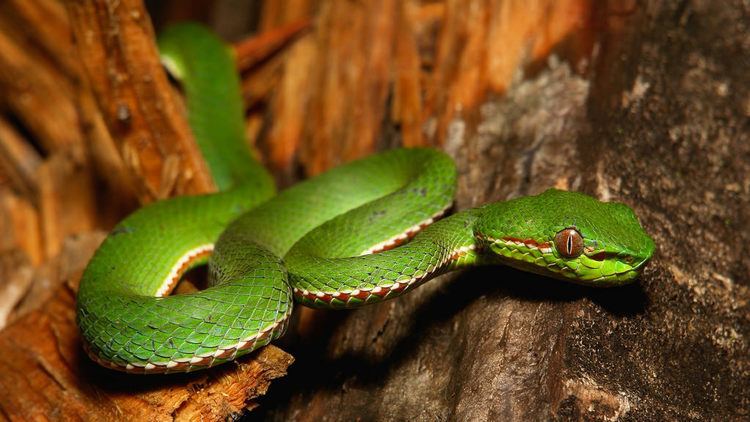 | ||
Lower classifications rattlesnake, Copperhead, Bothrops, Cottonmouth, Fer‑de‑lance Similar Massasauga, Bothrops, Rattlesnake | ||
The Crotalinae, commonly known as pit vipers, crotaline snakes, or pit adders, are a subfamily of venomous vipers found in Eurasia and the Americas. They are distinguished by the presence of a heat-sensing pit organ located between the eye and the nostril on either side of the head. Currently, 18 genera and 151 species are recognized: seven genera and 54 species in the Old World, against a greater diversity of 11 genera and 97 species in the New World. These are also the only viperids found in the Americas. The groups of snakes represented here include rattlesnakes, lanceheads, and Asian pit vipers. The type genus for this subfamily is Crotalus, of which the type species is the timber rattlesnake, C. horridus.
Contents
- Asian vine snakes malayan pit vipers
- Description
- Geographic range
- Habitat
- Behavior
- Reproduction
- Taxonomy
- Genera
- References
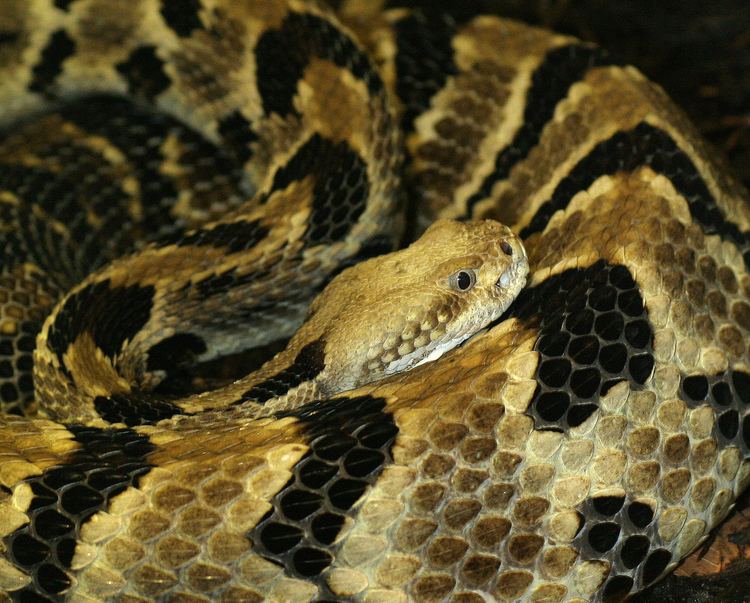
Asian vine snakes malayan pit vipers
Description
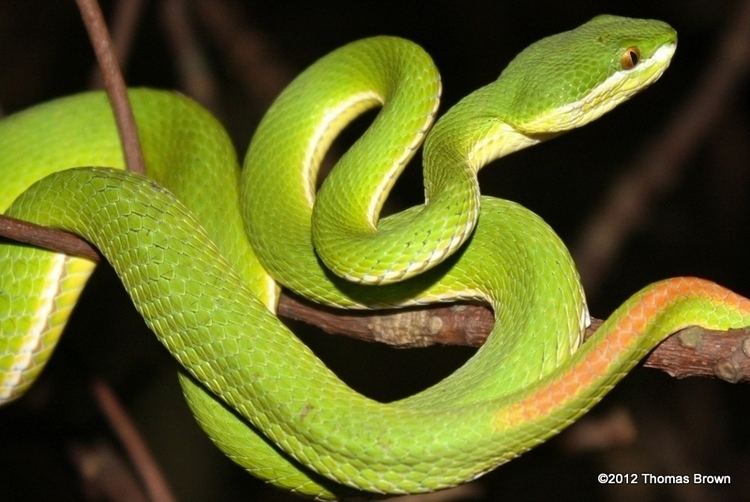
These snakes range in size from the diminutive hump-nosed viper, Hypnale hypnale, that grows to an average only 30–45 cm (12–18 in), to the bushmaster, Lachesis muta, a species known to reach a maximum of 3.65 m (12.0 ft) in length.
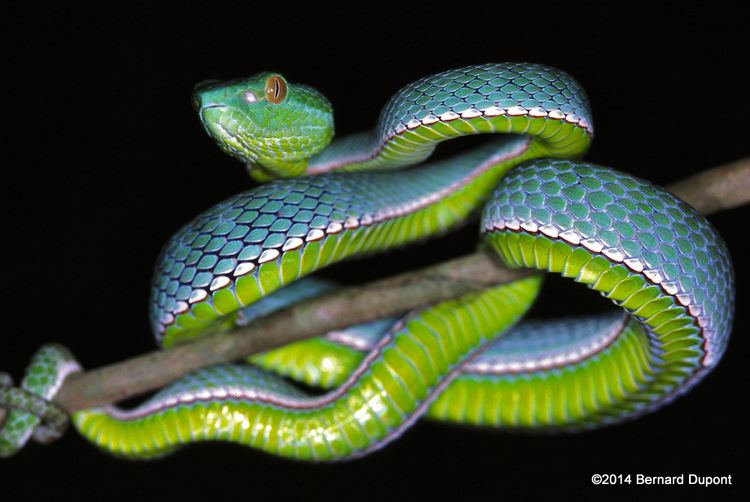
What makes this group unique is that they all share a common characteristic: a deep pit, or fossa, in the loreal area between the eye and the nostril on either side of the head. These loreal pits are the external openings to a pair of extremely sensitive infrared-detecting organs, which in effect give the snakes a sixth sense to help them find and perhaps even judge the size of the small, warm-blooded prey on which they feed.

The pit organ is complex in structure and is similar to the thermoreceptive labial pits found in boas and pythons. It is deep and located in a maxillary cavity. The membrane is like an eardrum that divides the pit into two sections of unequal size, with the larger of the two facing forwards and exposed to the environment. The two sections are connected via a narrow tube, or duct, that can be opened or closed by a group of surrounding muscles. By controlling this tube, the snake can balance the air pressure on either side of the membrane. The membrane has many nerve endings packed with mitochondria. Succinic dehydrogenase, lactic dehydrogenase, adenosine triphosphate, monoamine oxidase, generalized esterases, and acetylcholine esterase have also been found in it. When prey comes into range, infrared radiation falling onto the membrane allows the snake to determine its direction. Having one of these organs on either side of the head produces a stereo effect that indicates distance, as well as direction. Experiments have shown, when deprived of their senses of sight and smell, these snakes can strike accurately at moving objects less than 0.2°C warmer than the background. The paired pit organs provide the snake with thermal rangefinder capabilities. Clearly, these organs are of great value to a predator that hunts at night, as well as for avoiding the snake’s own predators.

Among vipers, these snakes are also unique in that they have a specialized muscle, called the muscularis pterigoidius glandulae, between the venom gland and the head of the ectopterygoid. Contraction of this muscle, together with that of the m. compressor glandulae, forces venom out of the gland.
Geographic range
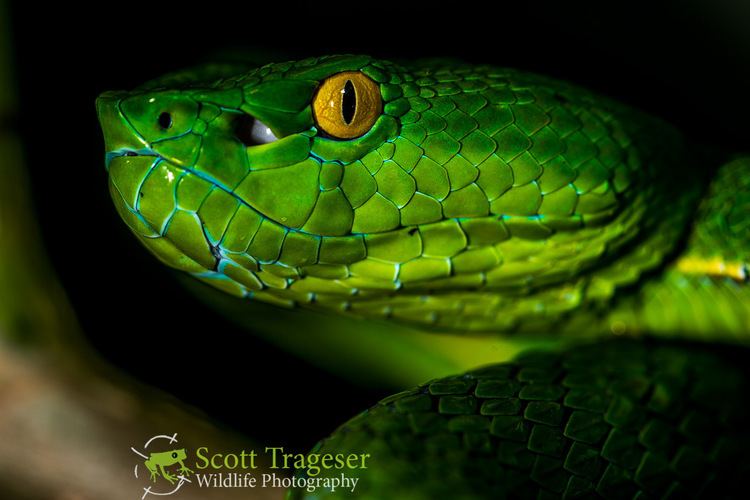
This family of snakes is found in the Old World from eastern Europe eastward through Asia to Japan, China, Indonesia, peninsular India, Nepal, and Sri Lanka. In the Americas, they range from southern Canada southward to Central America to southern South America.
Habitat
This is a versatile group, with members found in habitats ranging from parched desert (e.g., the sidewinder, Crotalus cerastes) to rainforests (e.g., the bushmaster, Lachesis muta). They may be either arboreal or terrestrial, and one species is even semiaquatic: the cottonmouth, Agkistrodon piscivorus. The altitude record is held jointly by Crotalus triseriatus in Mexico and Gloydius strauchi in China, both of which have been found above the treeline at over 4,000 m elevation.
Behavior
Although a few species are highly active by day, such as Trimeresurus trigonocephalus, a bright green pit viper endemic to Sri Lanka, most are nocturnal, preferring to avoid high daytime temperatures and to hunt when their favored prey are also active. The snakes' heat-sensitive pits are also thought to aid in locating cooler areas in which to rest.
As ambush predators, crotalines typically wait patiently somewhere for unsuspecting prey to wander by. At least one species, the arboreal Gloydius shedaoensis of China, is known to select a specific ambush site and return to it every year in time for the spring migration of birds. Studies have indicated these snakes learn to improve their strike accuracy over time.
Many temperate species (e.g. most rattlesnakes) congregate in sheltered areas or 'dens' to overwinter (see hibernation), the snakes benefitting from the combined heat. In cool temperatures and while pregnant, vipers also bask on sunny ledges. Some species do not mass together in this way, for example the copperhead, Agkistrodon contortrix, or the Mojave rattlesnake, Crotalus scutulatus.
Like most snakes, crotalines keep to themselves and strike only if cornered or threatened. Smaller snakes are less likely to stand their ground than larger specimens. Pollution and the destruction of rainforests have caused many viper populations to decline. Humans also threaten vipers, as many are hunted for their skins or killed by cars when they wander onto roads.
Reproduction
With few exceptions, crotalines are ovoviviparous, that is, females give birth to live young. Among the oviparous (egg-laying) pit vipers are Lachesis, Calloselasma, and some Trimeresurus species. All egg-laying crotalines are believed to guard their eggs.
Brood sizes range from two for very small species, to as many as 86 for the fer-de-lance, Bothrops atrox, a species among the most prolific of all live-bearing snakes. Many young crotalines have brightly coloured tails that contrast dramatically with the rest of their bodies. Used in a behavior known as caudal luring, the young snakes make worm-like movements with their tails to lure unsuspecting prey within striking distance.
Taxonomy
In the past, the pit vipers were usually classed as a separate family: the Crotalidae. Today, however, the monophyly of the viperines and the crotalines as a whole is undisputed, which is why they are treated here as a subfamily of the Viperidae.
Genera
*) Not including the nominate subspecies.
T) Type genus.
